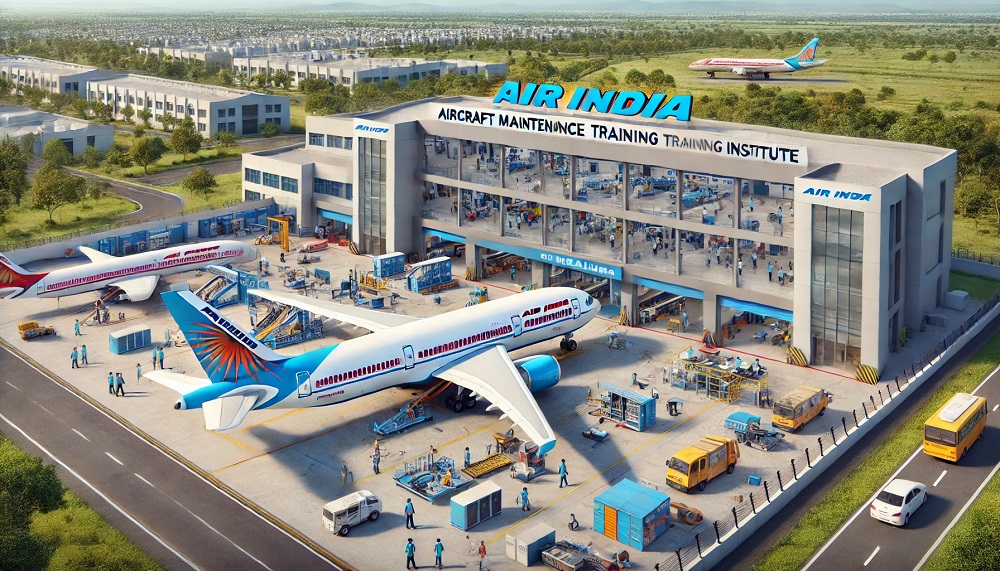Airlines
US Air Force unveils new color scheme for Air Force One

President of the United States Joe Biden has selected the livery design for the “Next Air Force One,” VC-25B, a design that will closely resemble the livery of the current Air Force One, VC-25A, while also modernizing for the 21st century.
The VC-25B livery differs significantly from the VC-25A livery in three key ways while accommodating the larger 747-8i aircraft of the VC-25B. Compared to the robin’s egg blue of VC-25A, the light blue on VC-25B has a little deeper, more contemporary tone. Moreover, rather of the robin’s egg blue of the VC-25A engines, the VC-25B engines will use the darker blue from the cockpit area. The VC-25B does not have a polished metal part because current commercial aircraft skin alloys do not support it.
Why Are Most Airplane Seats Blue?(Opens in a new browser tab)
For Boeing to carry out engineering, certification-preparation, and supplier selection efforts for the program, a formal contractual decision for a VC-25B livery was not necessary until this year. Because it had been stated in the public as a desirable livery for the VC-25B in 2019, the Air Force had previously showcased it in such a livery. A thermal investigation later revealed that due to the higher heat in some situations, the dark blue in the design would need additional Federal Aviation Administration qualification testing for a number of commercial components.
The VC-25B Program will deliver a new fleet of aircraft to enable POTUS to execute the duties of Head of State, Chief Executive, and Commander in Chief. The aircraft will be uniquely modified to provide the POTUS, staff, and guests with safe and reliable air transportation with the equivalent level of communications capability and security available in the White House.
The VC-25B aircraft will replace the current VC-25A fleet, which faces capability gaps, rising maintenance costs, and parts obsolescence. Modifications to the aircraft will include electrical power upgrades, a mission communication system, a medical facility, an executive interior, a self-defense system, and autonomous ground operations capabilities.
VC-25B deliveries are projected for 2027 for the first aircraft and 2028 for the second aircraft. The Air Force remains postured to keep VC-25A available and mission-ready until the delivery of the VC-25B.

Airlines
Air India to Launch aircraft maintenance training institute in Bengaluru

Air India, one of India’s leading global airlines, is set to establish a Basic Maintenance Training Organization (BMTO) in Bengaluru.
This institute will offer a comprehensive Aircraft Maintenance Engineering (AME) program certified by the Directorate General of Civil Aviation (DGCA). The program will follow an integrated 2+2 year structure, combining classroom learning with practical, hands-on training.
This initiative is part of Air India’s broader goal of creating a robust aviation ecosystem in India. With plans to expand its fleet and strengthen its operations, the airline aims to build a skilled workforce of maintenance engineers, making the organization self-reliant while supporting its ambitious transformation journey.
This country tops visa rejections in the popular Schengen countries
To bring this vision to life, air india has partnered with Bengaluru Airport City Limited (BACL), a subsidiary of Bangalore International Airport Limited (BIAL). Together, they will develop a state-of-the-art facility spanning 86,000 square feet at Bengaluru Airport City.
This purpose-built campus will feature modern classrooms, well-equipped laboratories, and qualified trainers to deliver world-class education and training. The institute is expected to become operational by mid-2026.
The BMTO will be located close to Air India’s new 12-bay Maintenance, Repair, and Overhaul (MRO) facility, also set to open in Bengaluru by early 2026. The AME program will begin with two years of academic coursework, followed by two years of practical training at the MRO, ensuring students receive hands-on experience adhering to industry standards.
Sanctions & Engine Issues Ground Half of Russia’s A320neo fleet
In the meantime, Air India has introduced a Cadet AME program in collaboration with reputable institutions in Bengaluru and Hyderabad.
This ensures continuity in its commitment to developing skilled aircraft maintenance engineers while the BMTO facility is under construction. The program also allows students to pursue a bachelor’s degree through university partnerships, enhancing their career and academic opportunities.
With this initiative, air india plane aims to address the growing demand for skilled professionals in aircraft maintenance and engineering, air india new planes contributing to the development of India’s aviation sector and creating specialized career paths for aspiring engineers.
-

 Aviation2 months ago
Aviation2 months agoMicrosoft Flight Simulator Raises $3 Million to Bring Back the An-225 Mriya
-

 Airlines2 months ago
Airlines2 months agoQatar Citizens Can Travel to the United States Without a Visa
-

 Aviation2 months ago
Aviation2 months agoQatar Airways bans these new Electronic Devices on plane
-

 Airlines2 months ago
Airlines2 months agoJapan Airlines Rolls Out Free Domestic Flights to International Passengers
-

 Defence2 months ago
Defence2 months agoWhich Country Has the Largest Fleet of Fighter Aircraft?
-

 Airport2 months ago
Airport2 months agoWestern Sydney Airport Welcomes Its First Plane After 6 Years of construction
-

 Travel2 months ago
Travel2 months agoQatar Airways Launches Four Additional Flights from Amsterdam
-

 Aviation2 months ago
Aviation2 months agoDid you know ? Once Boeing 747 carried 1088 passenger in 1991








